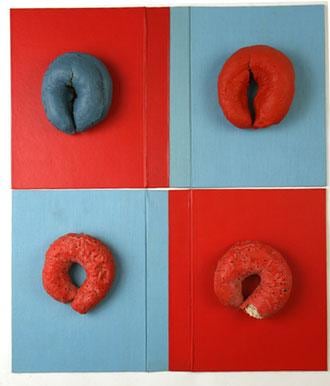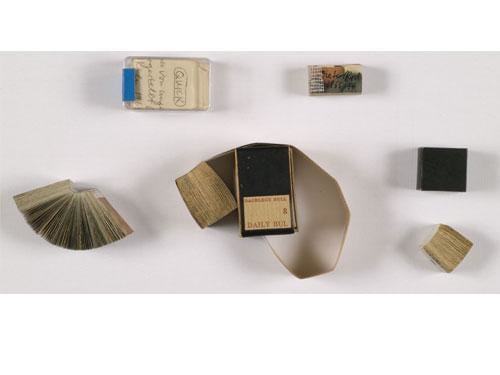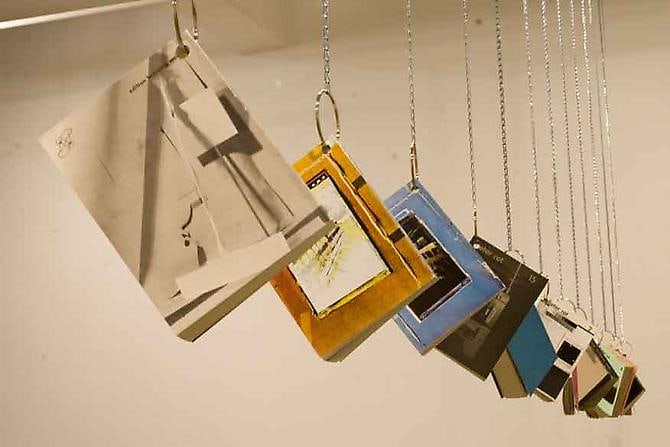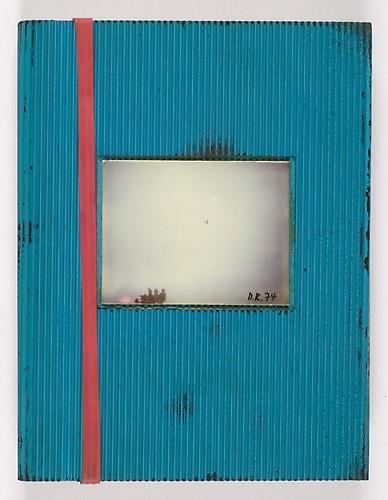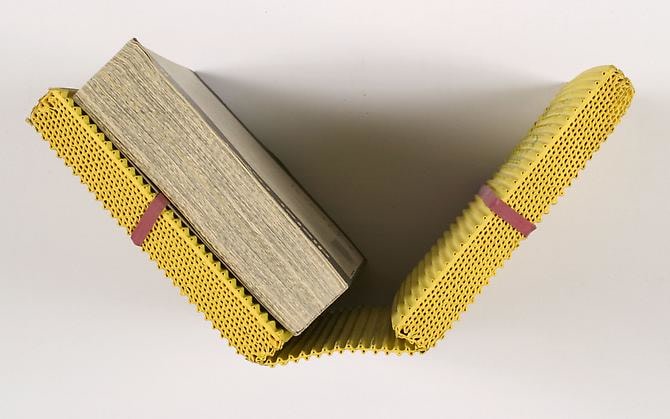Dieter Roth: Unique Editions is a two-gallery exhibition of German-born, Swiss artist, Dieter Roth (1930 -1998). The exhibition, organized in collaboration with Matthew Zucker, highlights the originality of Roth’s books and editions, which have, until recently, been known primarily through underground channels.
Roth’s editions of books, graphics and multiples exhibited here are one-of-a-kind works of art. Roth eschewed traditional artistic procedures, for example, by slicing up newspaper pages to make microbooks, including The Daily Mirror Book (1961), a miniscule book made out of pages from the British tabloid, The Daily Mirror. The artist also regularly made use of non-art mediums such as chocolate, cheese, sausage, and banana to create unique, fugitive works.
What distinguishes this exhibition is that at least two examples of each edition are shown together, demonstrating Roth’s exploration of difference within structures of sameness. The exhibition clearly demonstrates the variety of the artist’s editions, challenging commonly held ideas of what constitutes an edition.
Like Ed Ruscha, Dieter Roth is a pioneer of the modern artist’s book. His first and most unique books include children’s books and hand-cut slot books dating from the mid-1950s, several years before Ruscha published his first title in 1963. Roth’s books and editions constituted the works to which he was most passionately committed; they were also the ones on which his original reputation was built in Europe during the late1960s and early 1970s; (his first major museum shows were all retrospectives of books and editions).
Dieter Roth created the majority of the works in the exhibition in his ownstudio, seizing control of most aspects of the creative and publishing process. With this hands-on, do-it-yourself approach, Roth created unique books, prints, and editions challenging conventional genres; having influenced many artists over the last four decades, these works are arguably becoming his most significant contributions to art history.

